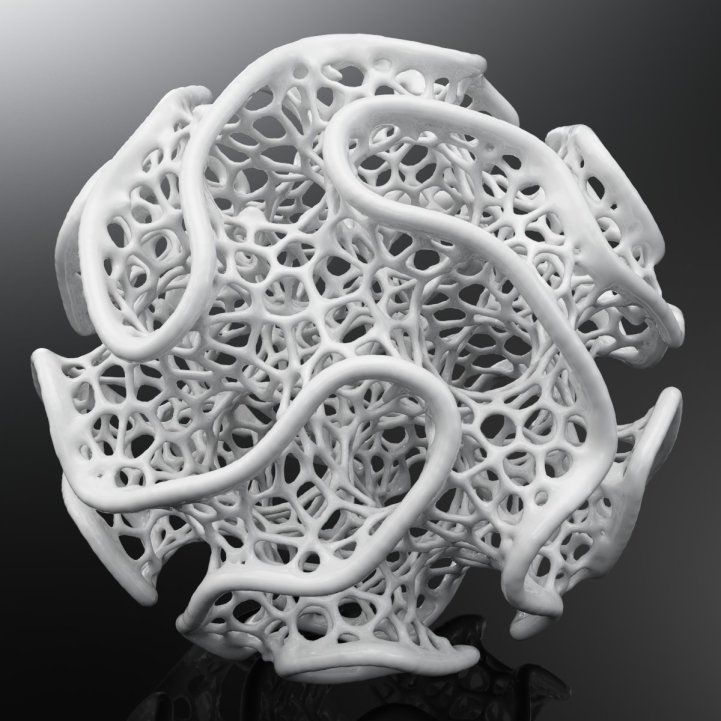A big issue that arises within technical exploration is the variety of options available with an easy Google search. This series is so vast in where it can go in terms of its learning possibilities. This makes it essential for one to have a very sharp focus on what we are trying to do with code. It is a major problem within the software development community as well. Building things that are complex, but have no practicality can become tiresome. Elegant and simple solutions are what we want. So how will do this in our coding series?
Firstly, we need to research thoroughly the tools and specifically the solution we are trying to achieve. Our goal initially as we start this series is to showcase coding and how it can create 3D objects through generative design. This is broadly defined so far. The way to do this is an open ended question. What becomes important is the tool we are using to get the job done. More specifically after we have done the basics of 3D object creation and manipulation within one platform or coding language, we may move on to replicating this in different coding environments.
Throughout this process, there will be terminology that I am unfamiliar with. I’ll be talking more deeply about them in separate articles. This will also help for others and myself who are in need of learning the basic tenets of computer science as well. I have a good amount of experience and understand some things, but it will be important to explain these topics and further my understanding so that I can have a solid understanding as well as show others.
I am particularly focusing this series on generative design and coding for these purposes. When you enter the realm of 3D coding it is such a vast ocean of options. This includes 3D coding applications towards VR/AR, software package creation, manufacturing simulations, etc. I have a larger interest in generative design as I see it’s future potential. The fact that humans will not necessarily have to design things themselves as much in the future is an interesting situation to me. I myself am a fan of designing, sketching, and mocking up products, but I am intrigued to see how far generative design is currently, and how we could leverage this.
Generative design can be defined as a design process that involves a program that creates outputs that are held within certain constraints. Designers will be able to precisely edit the feasible region of their design by changing mathematical values. These values will be a variable within a program that meets certain constraints that we defined earlier.
Generative design can be defined as an iterative design process that involves a program that will generate a certain number of outputs that meet certain constraints, and a designer that will fine tune the feasible region by changing minimal and maximal values of an interval in which a variable of the program meets the set of constraints, in order to reduce or augment the number of outputs to choose from. The program doesn’t need to necessarily be run on a machine like a computer, it can be run by a human for example with pen and paper.
So stay tuned as I am doing research on what tools we will be focusing on within this series.
Subscribe to Our Email Newsletter
Stay up-to-date on all the latest news from the 3D printing industry and receive information and offers from third party vendors.
Print Services
Upload your 3D Models and get them printed quickly and efficiently.
You May Also Like
Reinventing Reindustrialization: Why NAVWAR Project Manager Spencer Koroly Invented a Made-in-America 3D Printer
It has become virtually impossible to regularly follow additive manufacturing (AM) industry news and not stumble across the term “defense industrial base” (DIB), a concept encompassing all the many diverse...
Inside The Barnes Global Advisors’ Vision for a Stronger AM Ecosystem
As additive manufacturing (AM) continues to revolutionize the industrial landscape, Pittsburgh-based consultancy The Barnes Global Advisors (TBGA) is helping shape what that future looks like. As the largest independent AM...
Ruggedized: How USMC Innovation Officer Matt Pine Navigates 3D Printing in the Military
Disclaimer: Matt Pine’s views are not the views of the Department of Defense nor the U.S. Marine Corps Throughout this decade thus far, the military’s adoption of additive manufacturing (AM)...
U.S. Congress Calls Out 3D Printing in Proposal for Commercial Reserve Manufacturing Network
Last week, the U.S. House of Representatives’ Appropriations Committee moved the FY 2026 defense bill forward to the House floor. Included in the legislation is a $131 million proposal for...




































